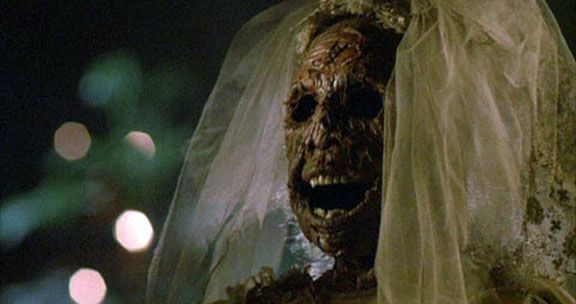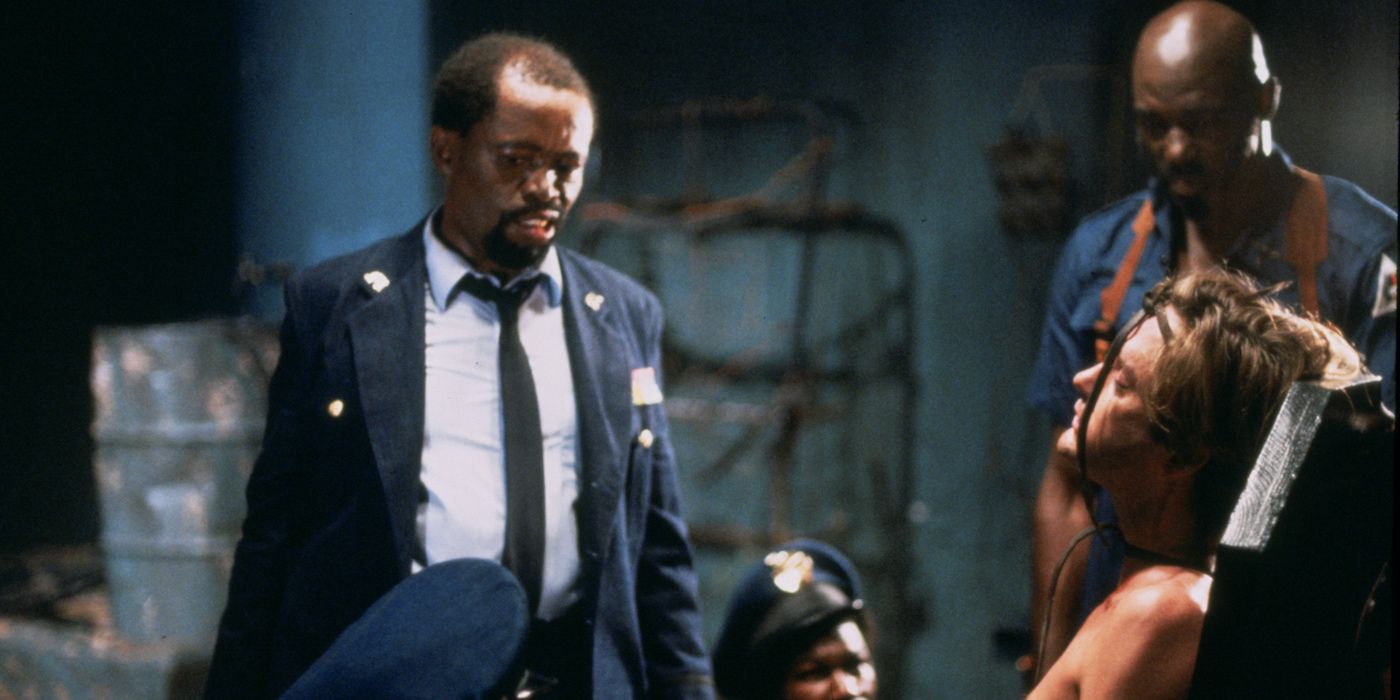The Big Picture
Wes Craven left one hell of a film legacy behind him. He is best remembered for starting a number of very subversive horror franchises, namely A Nightmare on Elm Street and Scream, which bucked the trends of the genre by blending humor and meta-commentary into the framework of traditional teen horror. His earlier work left a different kind of mark on cinema, with Last House on the Left and The Hills Have Eyes leaning into explicit terror that aimed to explore deep, human-based anxieties and social issues, like class warfare and the structure of the family unit. Over the course of his career, he examined the horror genre from many different angles, and he often did it differently to many of his contemporaries. One of his most remarkable projects, however, is often forgotten in the Craven discourse, despite its unique approach to the well-worn zombie subgenre.
Zombie movies have gone through piques and troughs throughout movie history, with the ‘30s and ‘60s being particular golden eras. By the 2000s, the zombie movie arguably hit its saturation point, and the standard template it adhered to was firm: zombies were often a result of some illness or government meddling, and depicted as fast-paced, thrashing, aggressive creatures that could only be killed by a blow to the head and were capable of “turning” others by biting them or otherwise passing on the infection. Movies like Resident Evil, 28 Days Later, The Crazies, and World War Z typified the 21st-century zombie story, and that is the impression that the modern 2023 viewer is left with. So it is such a pleasure to have movies like The Serpent and the Rainbow, which goes back to the roots of the zombie in the most loyal sense.
What Is ‘The Serpent and the Rainbow’ Based On?
The Serpent and the Rainbow is a fascinating addition to the horror genre. It is based upon a book of the same name by anthropologist Wade Davis, who studied the supposed zombification process in Haiti, wrote up his findings, and brought substances purported to make zombies back home with him. Although his theories were heavily disputed by scientific professionals, his work was responsible for bringing Haitian zombies to public consciousness. The movie was made shortly after Davis’ investigation and ends with a title card that claims that no conclusion had yet been found in the research of the zombie drugs. Despite the debatability of the claims, Davis undeniably brought about a very compelling theory that fascinated scientists and civilians alike and laid the groundwork for an interesting movie.
The opening scene sets a great mysterious tone for the movie and establishes the root of its terror. A man dies in a Haitian hospital and his funeral is the subject of a vodou ceremony; as his coffin is lowered into the ground, tears roll down the cheeks of the supposed corpse. The sequence is brimming with atmosphere, with fire and chanting and chaos, evoking a world that poses many questions but doesn’t necessarily offer any answers. Most importantly, it takes the traditional position of the first kill and moves in a non-traditional direction, asking the audience to ponder the idea of death itself not being the scariest part of the ordeal. Right from the start, the movie establishes this fearfully desperate position as its main threat, while establishing the mystery that the rest of the story will unravel.
What Is The Serpent and The Rainbow About?
Following a traumatizing trip to the Amazon, Dr. Dennis Alan (Bill Pullman) is called upon by a pharmaceutical company with an interesting proposition. The same dead Haitian man has been found years later, alive and not necessarily well, and the bigwigs jump to the questionable conclusion that the Haitians have some sort of drug that can mimic death temporarily, which could prove monumental if applied to anesthetic medicine. Alan heads to Haiti, where he teams up with psychiatrist Dr. Marielle Duchamp (Cathy Tyson) to figure it all out. His mission requires all the usual hustling, wheeling, dealing, and assimilating that puts the good doctor in one precarious position after another. Given he is suffering from regular nightmares and hallucinations as a result of his experiences in the Amazon, he is evidently biting off more than he can chew, and it turns out the Haitian authorities do not take at all kindly to his meddling, as a nail through his scrotum later proves.
Dr Alan is played boldly by Bill Pullman, who really earns his damn paycheck with this one. From the beginning he is tumbling down mountains, thrashing through forests, throwing himself out of buildings, and running through rivers, and the physical exertion and exposure to the wilderness never really lets up. It is a physically demanding role that must have been exhausting and uncomfortable. Given that this movie is peak ‘80s Craven, it is full of impressive practical effects sequences that require a lot from Pullman, including screaming in a coffin that’s filling with blood, hanging from an MC Escher-style building, wrestling with a leopard and falling down a corpse-studded rabbit hole. It’s remarkable really, and one can only sit back and admire Pullman’s tenacity and fortitude in what must have been a really difficult job.
‘The Serpent and the Rainbow’ Is Pure Wes Craven
The story itself doesn’t hang together very strongly. Even with Alan’s narration, the action jumps about quite a lot, with little explanation as to what leads from one scene to the next. There is a sex scene between Alan and Duchamp that appears right out of thin air, with not a hint of chemistry between the pair proceeding it, and it goes on awkwardly and unflatteringly for rather a long time, with no real consequence. Although it doesn’t drag or feel like an overly long movie, the way its various elements come together is a bit loose and raggedy. In terms of cohesive narrative, it is not as strong an effort as one would expect from Craven, who has always been able to craft a neat, succinct story that carries its themes quite naturally. Where Craven really puts his mark on this movie is in the action scenes.
This is very clearly of the Elm Street era for Craven, as he leans heavily into the surreal with his frequent hallucination and nightmare sequences, all while using practical effects that look great if just a tad cheesy. He mostly reigns in the dark humor that often went with the territory during this era, although there are a few laugh-out-loud moments that don’t throw the tone off too horribly. But there are hints of Craven’s previous incarnations that remind the audience of how dark and serious his early work was. The death and burial scenes are really chilling, focusing heavily on the idea of being conscious while it all occurs, with some great POV shots from the corpse’s perspective. Tension is built up throughout to where you just know that at some point, this terrible fate is going to befall our hero anthropologist. Pullman’s line, “Don’t let them bury me, I’m not dead!” is such a simple but powerful one that summarizes all the horror the movie has to offer in a few words, to the extent that it is often the tagline on posters and home viewing releases.
The Movie Has Great Performances WIth a Perfectly Tense Score
A vital cog in this machine is the brilliantly menacing performance from Zakes Mokae, who plays the corrupt police captain seemingly at the center of this terrifying trafficking ring. Mokae grounds the movie in a disturbing reality that the rest of its parts don’t really live up to, handling his role as if it were in a proper crime thriller or drama. The sheer dominance and presence that he conveys are scene-stealing, with tight physical and vocal control and not a hint of falling off the deep end of cheese or overacting. He is the perfect real-life villain, the type who doesn’t need to stalk, chase, or hunt because he has an infrastructure of power that will do all that for him. All he needs to do is make people know he’s not messing around, and Mokae delivers that by the truckload. If the movie has one feather in its cap, it’s this fantastic performance.
Brad Fiedel of Terminator fame brings a wonderful score to the project that heightens the tension. Although most of his work here feels thoroughly original, the closing credits music is so strikingly similar to his theme for The Terminator that it is uncanny. There is also some fabulously evocative native percussion courtesy of Nigerian drummer Babatunde Olatunji that really sells the mystical, otherworldly atmosphere that the movie is going for. Atmospherically, it’s a solid work that transports the viewer to a place that is spatially, culturally, and aesthetically far-removed, with all the elements of visual storytelling carrying their weight. While the structure and buoyancy of the narrative leave something to be desired, Craven builds an engrossing world here which is pivotal to the impact of the story.
Is ‘The Serpent and the Rainbow’ a Good Movie?
It’s certainly enjoyable, with many spectacles that demand the audience’s attention, and a mysterious aura that hasn’t often been explored on screen. It does feel somewhat sporadic and lacking in a clear direction, with plenty of “wait, what?!” moments, and it feels strange to say that the only thing a Wes Craven movie is missing is strong, focused direction. It seems that Craven was perhaps too fixated on the visual aspects of the movie that proper attention was not given to its structure. If you want mind-bending set pieces and fun practical effects, then this movie is right up your street. But it feels like it never quite reaches its full potential because it hasn’t been woven tightly enough: the fibers sag and distort and never really seem to hold together as a single item. It may be a bit messy, but it has such a great premise set within a well-constructed world that it is still a captivating movie that holds your psyche in the palm of its hand and slowly tightens its grip.
Its basis in Wade Davis’ research provides the movie with a very firm real-world foundation, in which science and culture are central, and the fantasy often attached to the zombie movie is quite absent. Because of this, it functions not only as a gripping and unique take on the zombie movie but also as an education on the origins and themes of this widely-known folklore character. Sure, Davis’ work may have been largely dismissed by this point, so the movie shouldn’t serve as a documentary or anything, but it encapsulates where the anthropological world was in the late ‘80s and the emergence of a mystery too compelling to leave alone. It also gives a nice look into traditional Haitian vodou practices and the beliefs that accompany them. In terms of both vodou and zombies, the movie steers clear of the usual cinematic tropes and aims to deliver something more grounded in reality. With Craven’s imagination and love for out-there visual sequences, it makes for a very entertaining and distinctive zombie movie.



























![It was all going well until… | Squid Game 2 | Netflix [ENG SUB] It was all going well until… | Squid Game 2 | Netflix [ENG SUB]](https://thehollywoodpremiere.com/wp-content/uploads/2025/01/It-was-all-going-well-until-Squid-Game-2-120x86.jpg)







